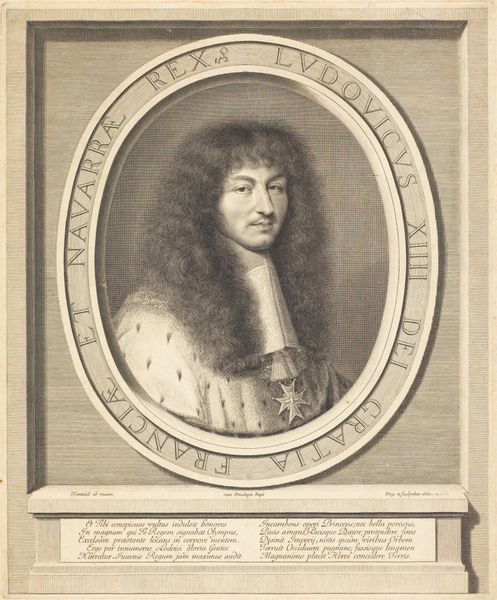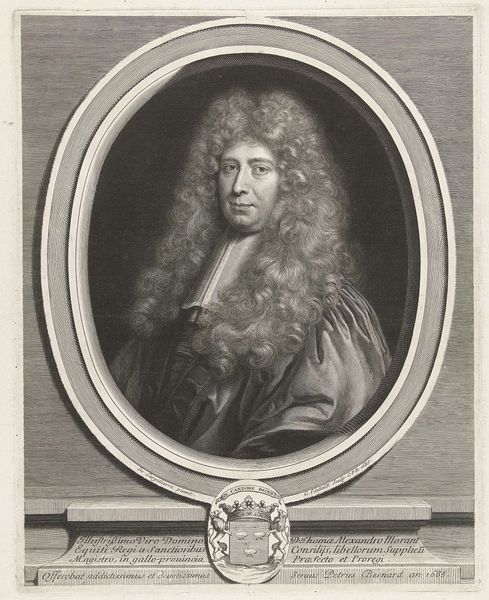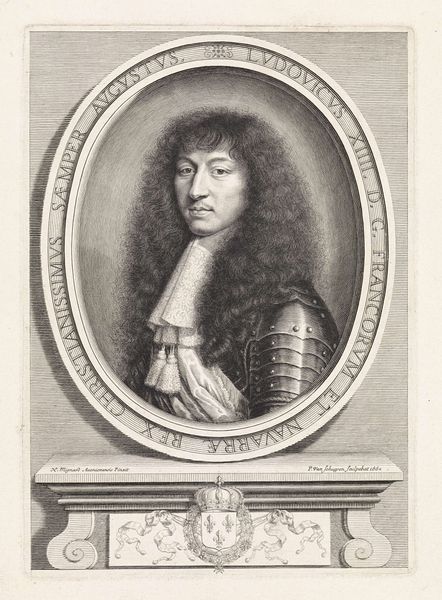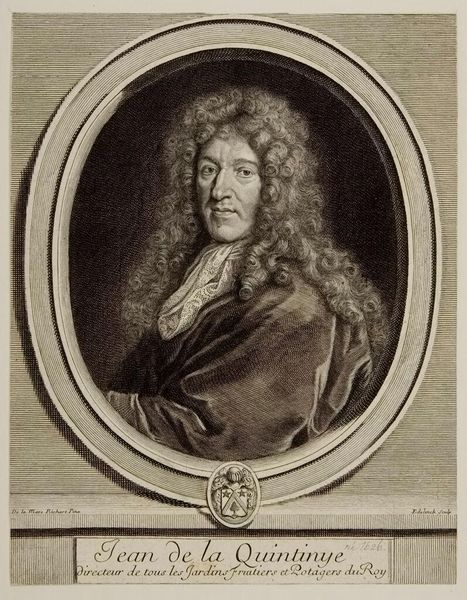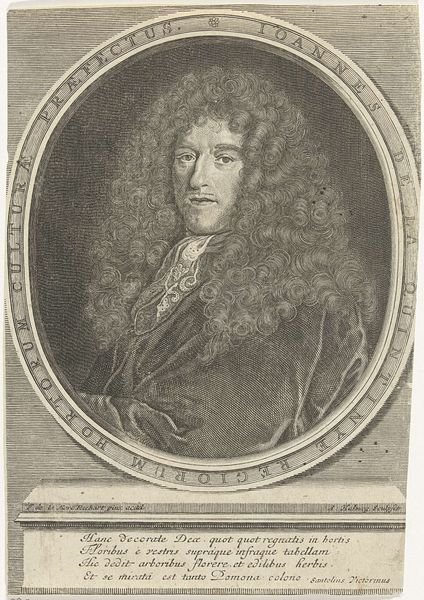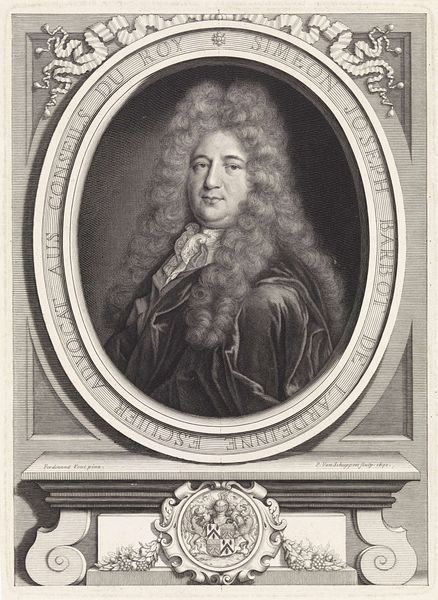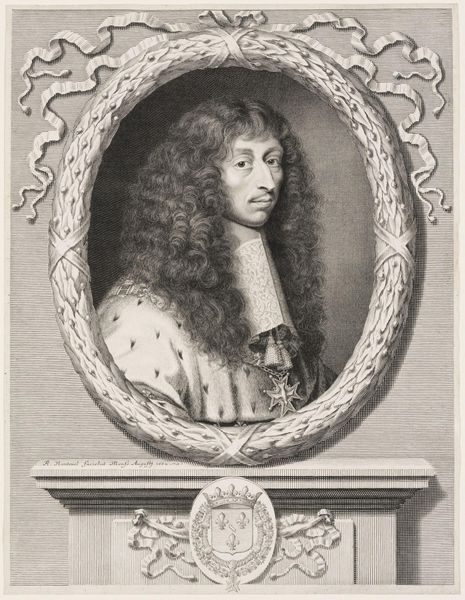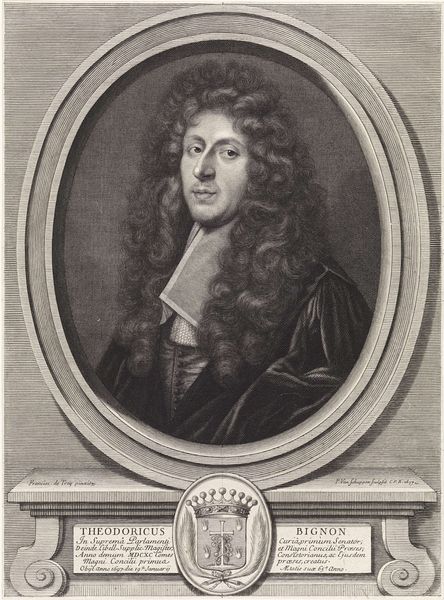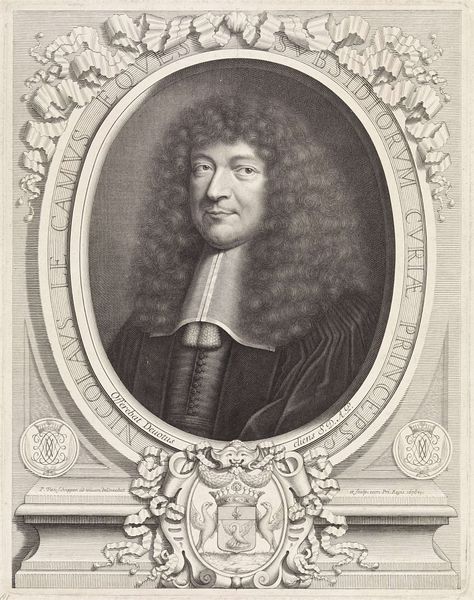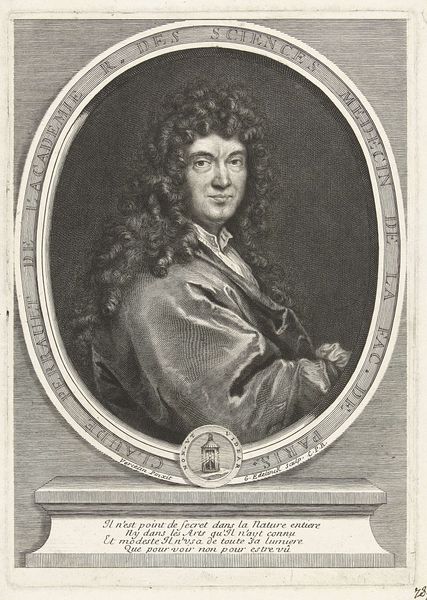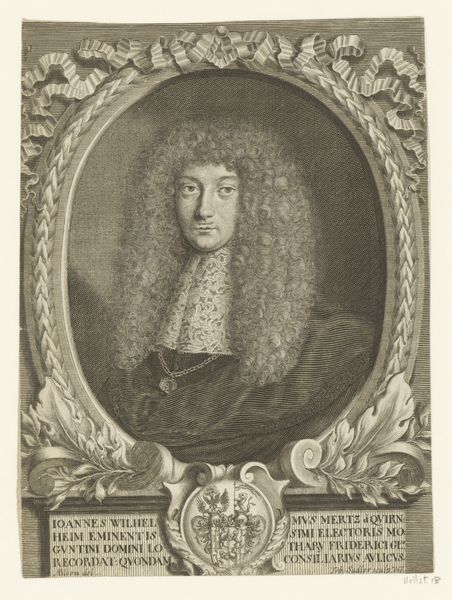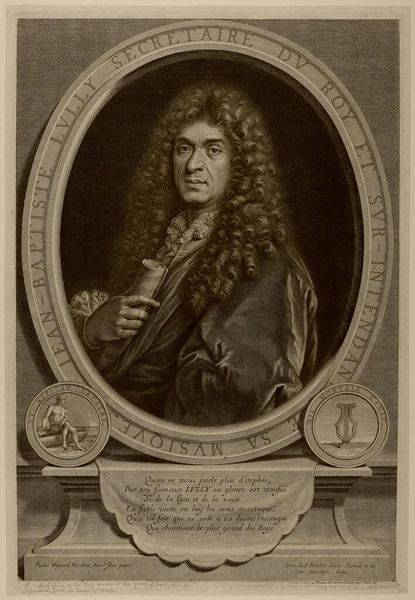
print, engraving
#
portrait
#
baroque
# print
#
engraving
#
realism
Dimensions: height 332 mm, width 257 mm
Copyright: Rijks Museum: Open Domain
Editor: Here we have Gérard Edelinck's "Portret van Guy-Crescent Fagon," an engraving dating sometime between 1666 and 1707, currently at the Rijksmuseum. The incredible detail, achieved solely through engraving, strikes me. What's your take on this print? Curator: This portrait offers a glimpse into the world of labor and consumption in 17th-century printmaking. Edelinck’s meticulous engraving – consider the sheer amount of time and skill needed to produce such a detailed likeness! It elevates printmaking beyond mere reproduction; the material process itself becomes a valuable commodity, reflecting Fagon's status through skilled labor. How does the print’s context change our perception of Fagon? Editor: It makes me think about accessibility. Was this portrait intended for a wide audience, or more exclusive circles? And how does that impact its message? Curator: Exactly! Consider the economic relationships embedded within. Who could afford such prints? Were they commissioned, creating a direct transaction between artist and patron, thus controlling how Fagon was consumed? How did the creation and distribution of this image support a whole network of labor, from the engraver to the paper makers and sellers? Editor: So, we’re not just looking at a portrait of a man, but at the economic and social forces that made the portrait possible. I'll definitely look at art with process more in mind now. Curator: Precisely! By examining the means of production, the material becomes just as important as the subject.
Comments
No comments
Be the first to comment and join the conversation on the ultimate creative platform.
